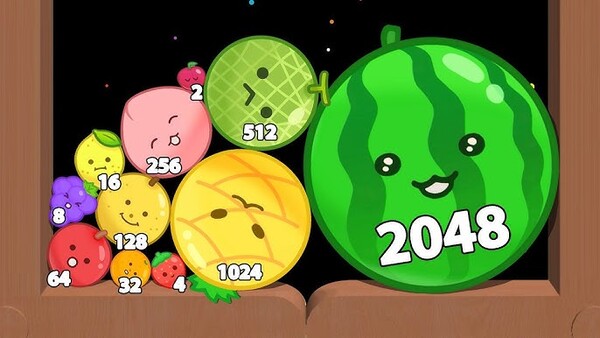Core Keeper is a pixel-art sandbox adventure game developed by Pugstorm and published by Fireshine Games. Drawing inspiration from games like Terraria, Stardew Valley, and Minecraft, it invites players into a procedurally generated underground world full of mystery, crafting, combat, and survival. Since its early access launch, the game has grown in both scope and depth, offering players a blend of exploration, base-building, and multiplayer gameplay. This article takes a detailed look into what makes Core Keeper such an exciting title, exploring its progression systems, biome diversity, boss fights, and more.
The Awakening: Introduction to the Underground World
Core Keeper begins with your character awakening in a strange subterranean world.
Mysterious Origins
The game doesn’t burden players with heavy exposition. You’re simply transported underground, left to explore and uncover the world’s secrets.
First Steps and Survival
Initial objectives include crafting basic tools, finding food, and establishing a base. The darkness is both a visual and strategic constraint, requiring players to manage lighting as they dig deeper.
Core Systems: Resource Management and Progression
At its heart, Core Keeper is about gathering, crafting, and upgrading your way to survival.
Mining and Smelting
Players mine copper, tin, iron, scarlet ore, and other resources, which are used to craft new tools and stations. Smelters and workbenches act as upgrade hubs.
Farming and Cooking
Food plays a vital role in survival. You can farm crops, fish, and cook meals that provide buffs such as movement speed, health regen, or mining strength.
Building and Automation: Designing Your Underground Base
Creating a sustainable and efficient base is central to long-term success.
Base Layout and Customization
Players can dig out their base, lay flooring, build walls, and customize everything from lighting to storage systems.
Automation Mechanics
Later in the game, automation features allow players to create conveyor belts, drills, and sorting systems, adding a factorio-like layer of complexity.
Combat Mechanics: From Slimes to Giants
Combat in Core Keeper is simple but scales with your progression.
Weapons and Armor
There are swords, bows, slingshots, and even tech-based weapons. Crafting better gear is essential for survival in tougher biomes.
Skill Trees and Abilities
As you fight, mine, or run, you gain experience in related skills. These trees allow for specialization—speed miners, tanky warriors, or agile rangers.
Boss Battles: Guardians of the Core
Bosses in Core Keeper are massive, biome-themed creatures that serve as milestones.
Major Boss Encounters
- Glurch the Abominous Mass: A giant bouncing slime that tests early combat
- Ghorm the Devourer: A massive insect that patrols tunnels
- The Hive Mother: A toxic blob queen with devastating area attacks
Rewards and Lore Unlocks
Each boss drops unique loot and unlocks lore and progression, such as new stations or portals.
Biome Diversity and Environmental Hazards
The underground world of Core Keeper features distinct biomes, each with its own risks and rewards.
Biome Types
- The Dirt Biome: Your starting zone
- The Clay Caves: Home to stronger mobs and rare resources
- The Sunken Sea: A watery expanse requiring boats and new strategies
Environmental Challenges
Lava pits, poisonous areas, and collapsing caves require players to adapt their equipment and tactics.
Multiplayer Experience: Cooperative Depths
Core Keeper supports multiplayer for up to 8 players, making it a communal survival experience.
Shared Progression
Players can explore, build, and fight together. The shared world evolves as the group collaborates on building and boss fights.
Role Specialization
One player might handle farming while another explores or fights. This division of labor makes multiplayer especially rewarding.
Crafting System: Complexity Through Simplicity
Crafting is central to every part of Core Keeper—from combat to automation.
Recipe Discovery
Recipes are unlocked by discovering materials or boss drops. Stations like alchemy labs and electronics tables expand crafting options.
Buff and Stat Crafting
Players can create gear or meals that boost speed, damage, resistance, or stamina, tailoring playstyle in meaningful ways.
Skill Progression and RPG Elements
RPG mechanics enrich Core Keeper beyond being just a survival sandbox.
Experience and Leveling
Every action—digging, fishing, fighting—contributes XP to relevant skills. Over time, you can invest points into talent trees.
Talent Trees
Trees include Melee Combat, Ranged Combat, Mining, Running, Vitality, and more. These allow for deep customization and personal playstyle refinement.
Future Potential and Community Mods
Though still in early access, Core Keeper has enormous potential.
Developer Roadmap
Regular updates have added new biomes, mechanics, and quality-of-life improvements. Upcoming features include new bosses and narrative arcs.
Community Modding
Mods offer UI improvements, gameplay tweaks, and even new items or enemies. As the modding tools mature, community content will likely explode.
Final Rating and Expert Verdict
Core Keeper blends the best of survival, RPG, and automation genres into a unique and rewarding underground adventure. Its pixel-art style masks deep systems that evolve the more you play. Whether solo or with friends, Core Keeper offers a gameplay loop that’s satisfying and full of discovery.
Core Keeper Rating Breakdown
| Category |
Score |
| Gameplay Systems |
9.0 |
| Visual Design |
8.7 |
| Exploration and Biomes |
9.2 |
| Combat and Boss Fights |
8.8 |
| Replayability |
9.4 |
Overall Expert Score:
9.0 / 10
Conclusion: A Buried Gem in the Indie Scene
Core Keeper is still expanding, but even in its current form, it delivers an engaging experience that combines exploration, crafting, and combat in ways few games manage. With a solid foundation and a passionate community, it stands as one of the most promising indie titles in recent years.






























